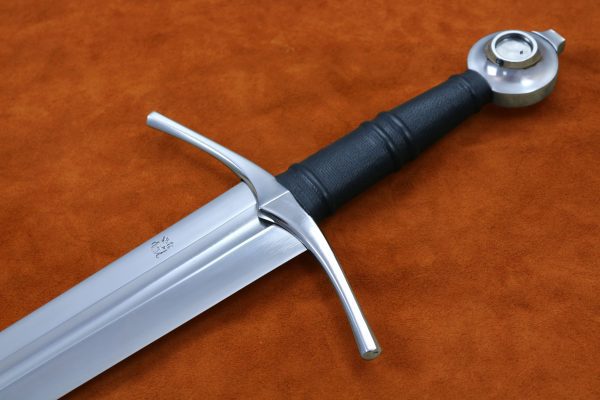
And so it went through several changes, and eventually settled on a new form, which we will examine next. Historical pieces still exist and are housed in museums around the world. Archaeologists have made some remarkable finds this year, from barnacle-encrusted Crusader swords at the bottom of the. In the late 12th century, during the meteoric rise and central importance of the mounted medieval knight became a central factor to victory on the battlefield, the Type X slowly stated to lose favor as it was becoming ineffective against plate armor that was becoming more commonly used for protection - a medieval arms race if you will. Medieval swords became the subjects of legends. Rusty swords, biblical arrowheads, non-returning boomerangs and more. The blade was usually between 31-33" in length, with a wide blade and hollowed out in the middle to lighten and balance it with what is called a fuller (sometimes mistakenly referred to as 'blood groove') and typically weighed between 2-3lbs. In many respects, it shares a lot of characteristics of earlier Viking and transitional medieval sword types. Out of all the medieval sword types, Type X spanned the longest period in medieval history (from the 9th to the 12th centuries) - and was a sword that was used by late period Vikings, the Normans, Crusaders, Anglo Saxons, Templars and Knights alike.ĭesigned to be used in one hand, either on foot or from horseback, while it could thrust its primary purpose was to cut, and was usually used in conjunction with a shield, helmet and possibly a maille hauberk that would at least deflect some of the damage, but was hardly invulnerable. The 5 Most Important Medieval Sword Types If you want to delve in deep and get the big picture of ALL the major medieval sword types, check out article where we attempt to make a rather complex sword classification system easily digestible.

RELATED ARTICLE: Oakeshott Typology Made Easy! Oakeshott typology that you should get to know first. That we call the medieval period, the 5 most important swords from the Order they appeared in the 500 years from the 10th to the 15th centuries Quite doable, right? So without any further ado we present them in the They were longer swords, as opposed to single-hand swords, or just swords. Long swords were more extensive versions of typical one-handed swords, except with stouter blades. This is probably the best way to immerse yourself in the typology - and learning 5 sword types in a single sitting or two is The long sword was reserved as a medieval battle sword (typically hung from the saddle instead of worn on the belt) and not used in friendly joust competitions. The development of the European sword in the medieval period. Really stand out, representing major turning points in the history of Out of the 24 swords, there are basically 5 that Pareto Principle* - the so called 80/20 rule - it applies here as much as In our case, it would mean that 20% of the swords in the typology represent 80% of the swords that were in use over the period.īut what if you wanted to shortcut the process?
#Medieval swords free#
* The Pareto Principle: law of the vital few. Buy the best quality medieval swords online, lowest price guarantee and largest selection Free shipping available. Historical European Martial Arts (HEMA).Ultra Durable 'Beater' Katana under $400.Affordable Traditional Blades with 'Hamon'.The cookie is set by the GDPR Cookie Consent plugin and is used to store whether or not user has consented to the use of cookies. The cookie is used to store the user consent for the cookies in the category "Performance". This cookie is set by GDPR Cookie Consent plugin. The cookies is used to store the user consent for the cookies in the category "Necessary".

The cookie is used to store the user consent for the cookies in the category "Other. The cookie is set by GDPR cookie consent to record the user consent for the cookies in the category "Functional". Powerful slashing weapons that struck fear into anyone on the wrong end. Nowhere is that more evident than in the swords this incredible culture was able to produce. The cookie is used to store the user consent for the cookies in the category "Analytics". Contrary to their reputation in popular culture as brutish thugs, the Norsemen (Vikings) were skilled combatants who constantly sought to perfect the art of war. It consists of a metal blade varying in length, breadth, and configuration but longer than a. This cookie is set by GDPR Cookie Consent plugin. Sword, preeminent hand weapon through a long period of history. These cookies ensure basic functionalities and security features of the website, anonymously. Necessary cookies are absolutely essential for the website to function properly.


 0 kommentar(er)
0 kommentar(er)
